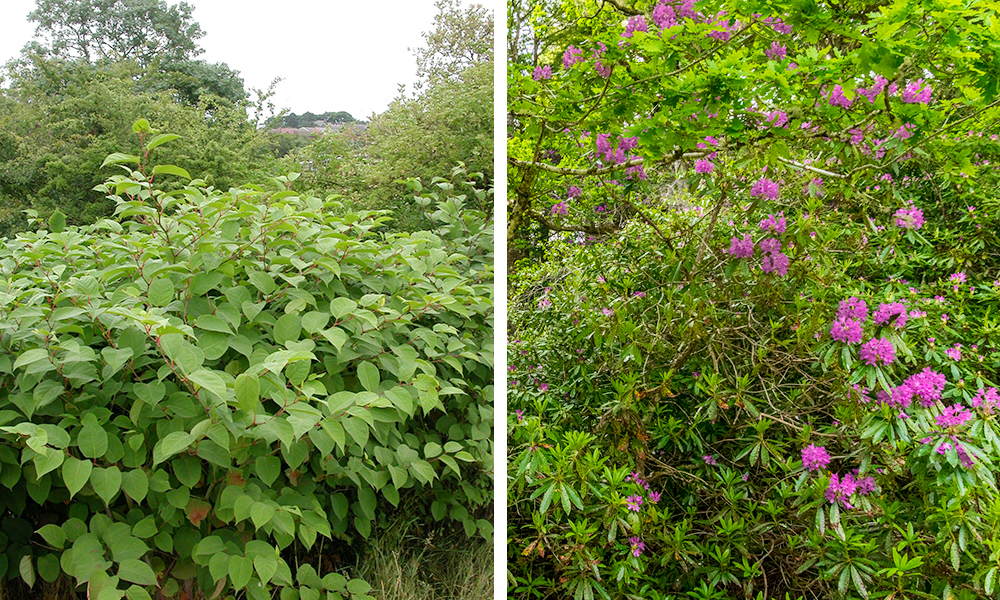Rebekah Strong on a major issue facing our natural environment
What is the Problem?
Scotland's wildlife is under significant pressure and one major threat is invasive non-native species (INNS). These species, that humans have introduced either accidentally or deliberately, have the potential to disrupt ecosystems, outcompete native species, and spread diseases.
The ecological impact is profound, often leading to a decline in native biodiversity and altering the natural balance of habitats.
INNS are a mounting problem, with more species arriving every year. Economically, the presence of INNS costs Scotland millions of pounds annually. Managing these species involves significant expenditure on control and eradication efforts, habitat restoration, and the repair of infrastructure damaged.
The financial burden extends to agriculture, forestry, fisheries, and tourism, with INNS causing reduced productivity and increased management costs.
Some species needing action
Numerous INNS are currently causing damage to Scotland’s natural environment. Among the most well-known is the grey squirrel (main image, © Bob Coyle), which were introduced from North America in the early 1900s and have resulted in the significant decline in the population of the native red squirrel through competition and the spread of squirrelpox, a virus lethal to red squirrels but not to greys. Grey squirrels also cause a significant amount of damage to trees. The annual cost of grey squirrel tree damage in England and Wales is estimated to be around £37m when lost timber value, reduced carbon capture, damage mitigation and replacement trees are considered.
Invasive non-native plants also present serious challenges. Japanese knotweed is known for its aggressive ability to spread and damage buildings and infrastructure. It forms dense thickets that crowd out native plants, reducing biodiversity and altering natural habitats. Equally concerning is giant hogweed, a plant with toxic sap that causes severe skin burns and blisters upon contact. This species can create monocultures along riverbanks and roadsides, outcompeting native flora and posing a significant health risk to people. Rhododendron ponticum is prolific across many areas of Scotland. Originating from the Mediterranean and Asia and brought over to be used for game bird cover by the Victorians, Rhododendrons now cover many rural hillsides and are strangling some very important and rare habitats, such as Scotland’s rainforest.
Each of these species exemplifies the broader problem posed by INNS and the urgent need for effective management and control strategies.

What needs to happen?
Combatting the threat of invasive non-native species requires collective action. The Scottish Wildlife Trust advocates for a prevention focused and solutions-based approach. Measures which allow early detection and prevent INNS from being introduced to new areas such as raising public awareness and good biosecurity are paramount. For established INNS a strategic and coordinated approach to control and eradication at the correct scale for the species in question is essential. Here’s what we would like to see happen:
- Prevention and Biosecurity: Implementation of national and local measures to prevent the introduction of new non-native species and restrict the spread of those already established in Scotland. This includes targeted actions like mammal biosecurity on islands and preventing grey squirrel expansion into the Highlands.
- Eradication and Long-Term Biosecurity: Ensure that all eradication initiatives are paired with comprehensive biosecurity plans to prevent re-invasion. These efforts should include controlling introduction routes and conducting thorough follow-up monitoring.
- Avoid Premature Success Assumptions: Eradication becomes more challenging and costly as target species become fewer and harder to find. Budgeting and communication need to reflect the difficulty of achieving complete eradication and we must announcements of success prematurely.
- Polluter Pays Principle: We should enforce the Polluter Pays Principle which would require those responsible for introducing invasive species to bear the costs of eradication, control, and biosecurity measures. This includes industries, businesses, and individuals who have contributed to the spread of these species.
- International Cooperation and Responsibility: INNS issues need to be tackled at both national and international levels and require coordinating efforts across borders and trade partnerships. We need also strategies to prevent the export of high-risk species from Scotland to other regions or countries.
- Non-Demonisation of INNS: We must avoid blame or demonisation of the species themselves. We need to recognise this as problem we brought on ourselves and maintain a responsible and ethical approach in communications about invasive non-native species.
There is a nature and climate crisis in Scotland. By taking proactive steps and working together, we can mitigate the impact of invasive non-native species and ensure a resilient environment for future generations. The Scottish Wildlife Trust is dedicated to helping native species thrive.
Rebekah Strong is policy manager - terrestrial for The Scottish Wildlife Trust.








I don't disagree with Ms. Strong but there is always going to be movement of species unless there is a formidable natural barrier, like the sea and even that is not necessarily impregnable. Another valid question is as to when invasive species become part of the biosphere: a century? A millennium? What about predatory species like cats? RSPB quotes 50 million garden birds are killed annually by cats